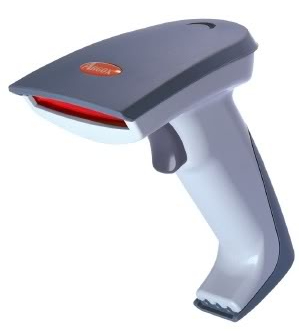Your Scanner is Not Reading Right?

Ever had your barcode scanner just quit on you? It's a common complaint we hear from shop owners: a headache when their scanner stops scanning or only works partially. This guide covers the usual suspects and how to fix them fast, so you can get back to serving customers without the drama.
We'll start with the easy stuff.
A dirty scanner window is a common problem, often caused by people placing their fingers on the scanner window. Get out of that habit. Also, dust or grime can cause reading issues. To clean, unplug the scanner and wipe the glass with a soft microcloth.
- Are the Cables Loose?
- Is Something Wrong with the Barcode?
- Is Your Scanner Old?
- Common Scanner Questions
- Keeping Things Running Smoothly
Are the Cables Loose?
Loose and/or faulty cables are another common problem. If the cable is not connected correctly, the scanner will not be able to talk with your POS System. Worn cables sometimes work intermittently
What to check:
- Make sure everything's plugged in tight.
- Look over the cables for frays or breaks. If one's damaged, replace it.
- Try using a different port on the computer as well.
Is Something Wrong with the Barcode?
With a clean scanner and solid connections, the barcode might be the problem. Check the barcode; some are difficult to read if they are shiny or wet.
What to look for:
- See if it's torn, faded, or poorly printed.
- For shiny packaging, angle it to minimise glare.
- Aim for decent lighting, enough to see clearly, but not so bright that it reflects on you.
Is Your Scanner Old?
These scanners are rugged, but retail is a tough environment for scanners. They are often dropped and damaged. After a few years, the wear and tear add up.
What to look for:
- Check for cracks or wobbly bits.
- If the window's off-kilter, it's damaged. In most cases, replacing it is smarter than fixing it, especially for safety and speed.
Signs it's time to retire it:
- Odd noises like grinding or whirring.
- Dim, flickering, or no light at all.
At that point, repairs are usually not worth it; you're better off with a new one that comes with a warranty.
Common Scanner Questions
We've got answers to the ones retailers ask us most.
How often should I clean my scanner?
It depends on your shop. If it's a dusty spot, such as a nursery, you may need to clean it daily; otherwise, clean it only when it becomes noticeable. As a rule, I do believe if it is working, do not mess with it. If it has to be done, it only takes seconds to do.
My scanner beeps, but nothing shows on the screen. What's up?
The beep indicates that it read the code correctly; the issue is likely downstream. Check cables, ports, or restart your computer—it's often the fix.
Why won't it read barcodes on phone screens?
Old laser models are designed for use with paper only. For screens, you need a 2D camera scanner—they handle digital codes no problem.
Should I bother fixing an old one?
Rarely. Repair costs can match the price of a new one, and you'll get something faster and warrantied instead.
Keeping Things Running Smoothly
Sorting out these basics can resolve most scanner issues and keep your checkout running smoothly. If it's still acting up after these checks, upgrading might be the next step; many retailers kick themselves for waiting.




